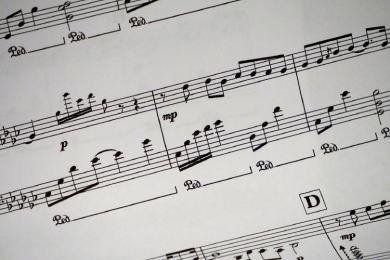I recently heard the term ’round’ when talking about music and wondered to myself, what is round music? So I researched what a ’round’ is and this is what I found!
A round is a type of canon in which the melody or tune recurs after its first statement. It is sung or played in whatever voice part the composer chooses (often at an interval other than that of the original part, to allow everyone to participate).
In this article we go into what makes a ’round’ in music, comparing a ’round’ to a cannon, and examples of a round and canon.
How Does A Round Work?
A Round is a musical technique where two or more people sing (or play an instrument) different parts that when played together produce a unified harmony to sound like one voice in rounds.
One person begins a section, then another continues it by harmonizing in their own key for another verse before passing it on to someone else who may add another verse and another until the end.
When a song is sung as a round singers can join in wherever they can. They can also be used as an alternative to applause at the end of a song or concert.
What Is Singing In Rounds Called?
It would depend on how many voices are singing at the same time. In a ’round,’ there is only one line and it is repeated by different instruments playing at different times.
In a canon, all of the parts sing or play the same tune throughout most or all of the song.
How Many Voices Can You Have In A Round?
Some rounds only involve 2 or 3 voices while others may involve 6 or more voices supporting one or two melodic lines.
These additional voices provide chords and harmonic support for the fundamental line and so create a three-dimensional sound: There is the melody plus an accompaniment that fills out the harmony.
I’ll note that a voice isn’t necessarily referring to the human voice, but a voice of an instrument, which could include the human voice.
Can You Have Rounds Without Canons?
The main difference between a round and a canon is that a ’round’ doesn’t have to be imitative. So in theory, yes – but in practice not really!
You could, therefore “write” a non-imitative piece for several instruments/sections of an orchestra that has one theme performed simultaneously by each part.
However, this wouldn’t be very interesting because there’d be no contrast between the two.
Another important thing about canons is that they usually have a key/tonal center – whereas rounds don’t.
What’s The Difference Between a Round and a Canon?
Canons have strict imitation while rounds do not. Canons usually have some form of “key” note while rounds do not necessarily have one key note. In rounds, it is possible to hear two or more independent melodies; whereas in canons thematic repetition occurs in the imitating parts.
Rhythmic intervals are usually used for this imitation and the imitating parts usually move in whole notes or half notes to enable them to be distinguished from each other.
The canonical interval may be smaller than the rhythmic interval which separates the parts. Similar to when two people are speaking together – they can understand each other if they speak singly but would not if they spoke simultaneously.
Canons were very popular during the Renaissance both as vocal music and as instrumental music, there being no distinction between these two forms of art at that period.
Many pieces now regarded as ‘canons’ only originated as lute accompaniments for songs, those with words now being called madrigals. But these accompaniments were so frequently played independently that they became known as ‘canons’, and this is what we have inherited today.
The most famous of all these canons is the Canon by Johannes Ockeghem which constitutes a complete Mass for three voices, but there are many others both vocal and instrumental, including a few in private collections of music from the Renaissance period.
Examples of Songs With Rounds
Rounds have also been used in movie soundtracks such as “A Hard Day’s Night” by The Beatles and “Help!” by The Beatles; the theme from “The Flintstones;” and television theme songs such as those of “Bonanza”, “The Beverly Hillbillies”, and “Friends”.
Famous songs which use rounds include:
- The Beatles – Yellow Submarine
- Benny Goodman – Sing Sing Sing
Summary
A round is a type of canon in which the melody or tune recurs after its first statement. It is sung or played in whatever voice part the composer chooses (often at an interval other than that of the original part, to allow everyone to participate).
